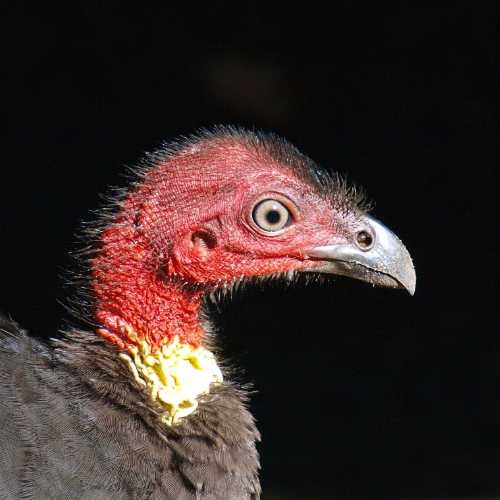The brush turkey is the largest bird you will encounter when visiting Mary Cairncross Scenic Reserve.
Adults grow up to 70cm long and weigh over 2kg. Their red, bald heads and bright yellow throats standout from their black bodies and tail.
This semi-ground-dwelling species has a varied diet and has adapted to human settlements quite successfully. Unfortunately, the brush turkey behaves as a scavenger and will parole the picnic areas with confidence. As with all wildlife it is important visitors do not feed the turkeys as this may lead to their population becoming out of balance.
The brush turkey is distributed along the eastern coast of Australia, favouring rainforests and wet schlerophyll environments.
Brush turkeys forage for insects, seeds and fallen fruit on the forest floor. They play an important and active role in distributing (and planting) seed. As a megapod they have large feet which are used to rake the leaf litter and break open debris in search of food.
They also use raking prowess to build large mounds of organic matter in which their eggs are incubated. These huge nests can be 4m in diameter and 1m high. Like a hot compost, heat is generated by the rotting vegetation in the centre of the mound between 33 -38 degrees Celsius. The male turkey has the busy role of checking the temperature using his bill and adding or subtracting vegetation as needed. As many as 50 eggs from various females might be in the mound. Once hatched, the chicks burrow out and are independent immediately.
As with other species who scratch at and turn the soil incessantly, turkeys are thought to play an important role in soil health and carbon capture.


Meet a selection of the feathered wildlife who live at the reserve
Protecting our forest


You will come across plenty of the animals in the reserve. We recommend not to get too close as this may provoke them. Feeding animals in the reserve is also not allowed.
